10 Essential Tips for Effective Business Web Design

10 Essential Tips for Effective Business Web Design
Overview
The article "10 Essential Tips for Effective Business Web Design" outlines key strategies that businesses can implement to enhance their online presence and user engagement through web design. It highlights that adopting a data-driven approach is essential; this feature allows businesses to make informed decisions based on user behavior and preferences.
The advantage of prioritizing simplicity in design leads to improved user experiences, ultimately benefiting conversion rates by making navigation intuitive. Additionally, ensuring mobile responsiveness is crucial, as more users access websites via mobile devices. This feature not only enhances accessibility but also improves search engine rankings.
Lastly, integrating SEO practices is vital for visibility; businesses that implement these strategies can expect to meet consumer needs more effectively, driving engagement and increasing their market reach. By understanding and applying these principles, companies can create effective websites that significantly improve their online performance.
Introduction
Crafting an effective business web design is not solely about aesthetics; it’s a strategic endeavor that can significantly influence user engagement and conversion rates. As businesses work to establish an online presence that resonates with their audience, they must consider various elements—from data-driven design decisions to the integration of social media.
However, with the rapid evolution of web design trends, how can businesses ensure they are not only keeping pace but also distinguishing themselves? This article explores ten essential tips designed to empower businesses to enhance their web design. Ultimately, these strategies will lead to increased visibility, improved user experience, and greater success in the digital landscape.
Initial Data Offering: Leverage Unique Datasets for Informed Design Decisions
Utilizing distinct datasets from platforms such as Initial Data Offering offers essential insights into consumer preferences and behaviors. By examining data on consumer interactions with various business web design components, businesses can tailor their platforms to better meet the needs of their target audience. This data-driven approach not only enhances user experience but also significantly boosts engagement and conversion rates.
For instance, websites that load in one second can see conversion rates nearly tripling compared to slower competitors; conversely, for every additional second of load time, your eCommerce conversion rate drops by 0.3%. Furthermore, a mobile-friendly layout is crucial, as it can increase repeat visits by 75%.
As Geoffrey Moore states, 'data is absolutely crucial to making smart business decisions,' underscoring the essential role of data in business web design. This commitment to data-driven insights drives informed decisions that lead to improved outcomes.
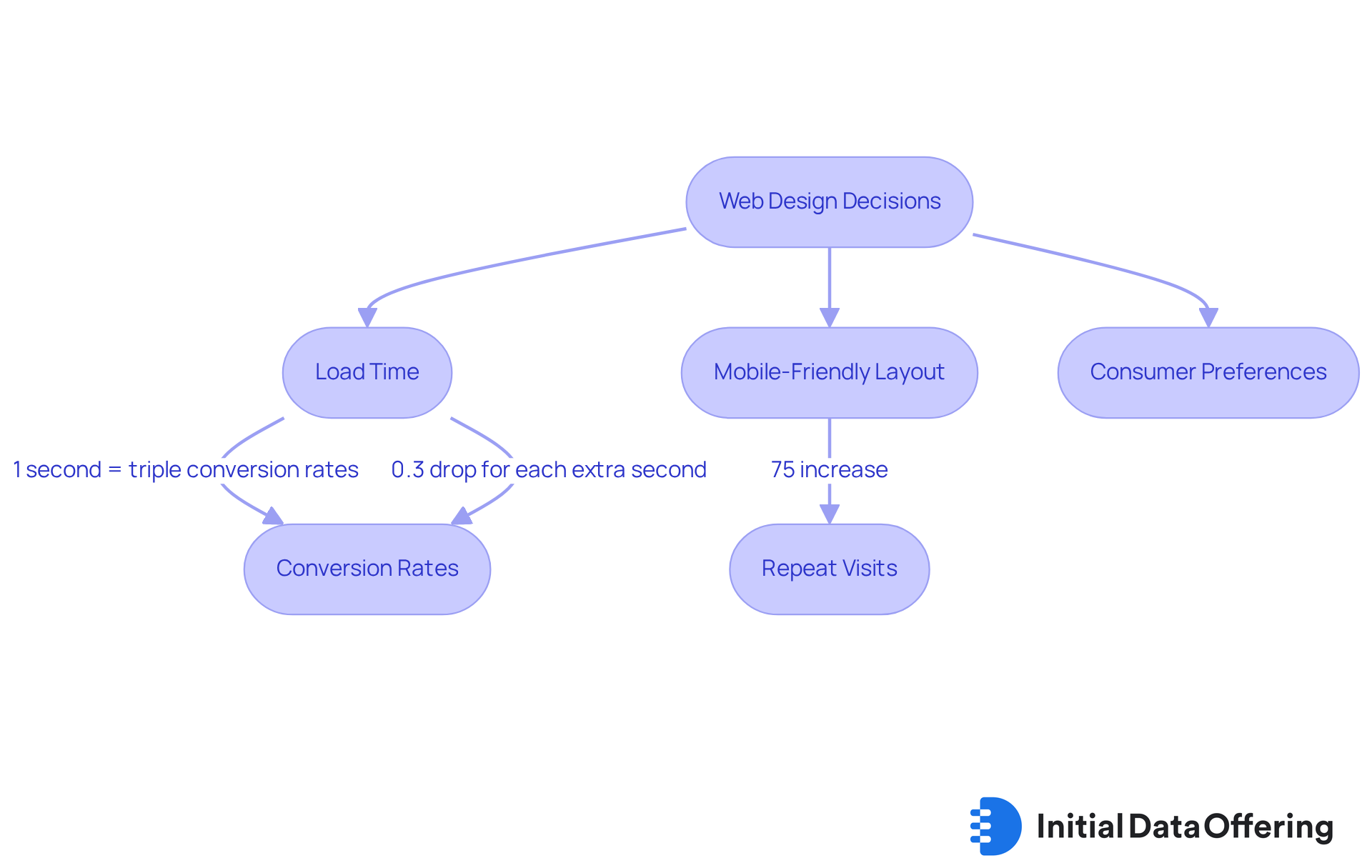
Keep Your Design Simple and Clean: Prioritize User Experience
A tidy layout significantly minimizes distractions, enabling individuals to concentrate on essential content. By incorporating ample white space, intuitive navigation menus, and straightforward layouts, you can effectively guide visitors through your site. This approach not only enhances the experience for users but also encourages guests to linger longer and explore further, ultimately leading to increased conversion rates.
Research indicates that platforms with simple designs can experience conversion boosts of up to 400%, while cluttered layouts often result in user frustration and drop-off. For example, Staples observed an impressive 500% increase in online revenue following a UX-focused site redesign.
As Ian Sells noted, 'Simplicity allows visitors to locate what they require swiftly, grasp the site's purpose, and interact effortlessly.'
Prioritizing simplicity in your web design is not merely a trend; it is a proven strategy for enhancing engagement and retention.
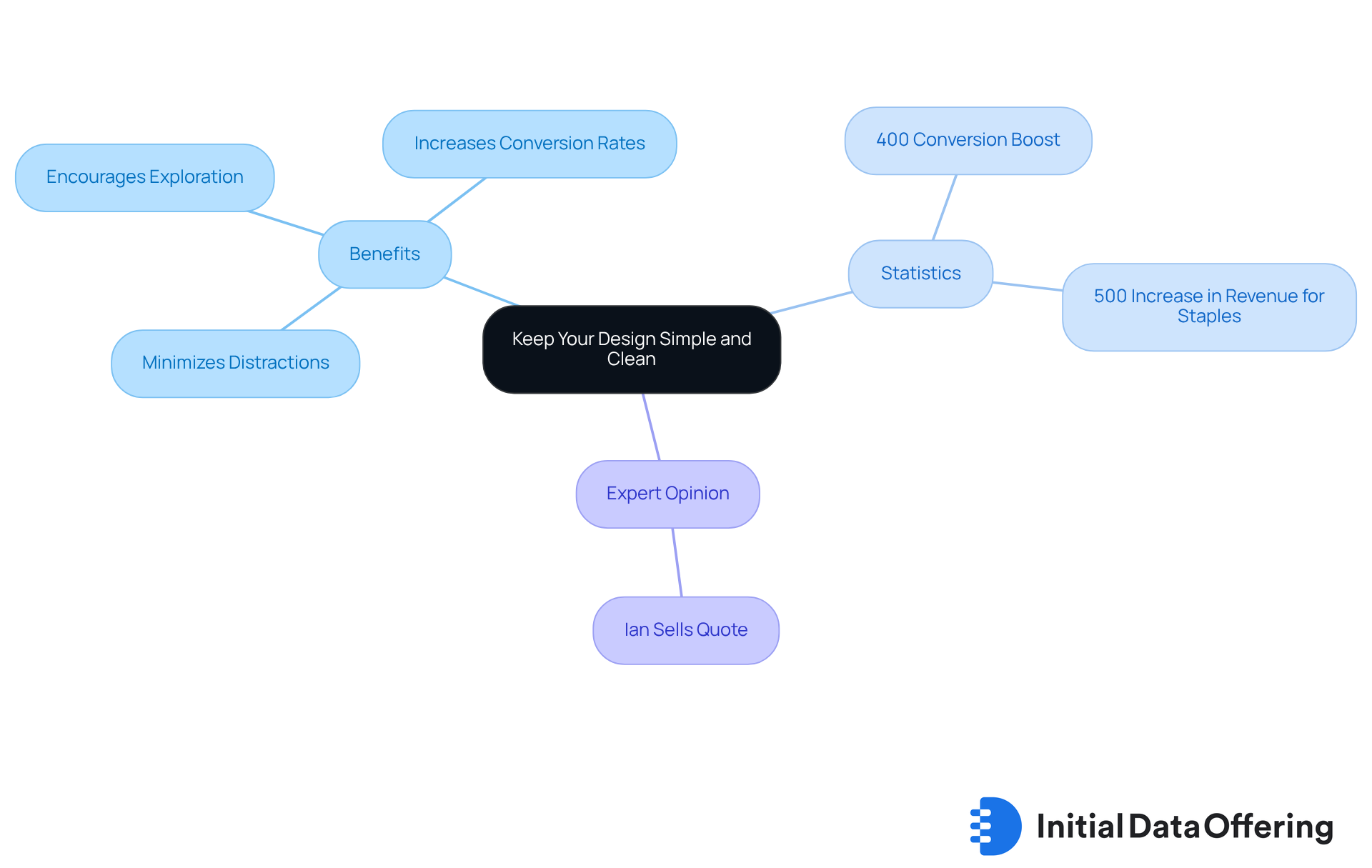
Integrate Social Media: Boost Engagement and Visibility
Incorporating social media buttons and feeds into your site can dramatically enhance audience engagement. This feature allows visitors to share content effortlessly, broadening your audience reach and fostering a sense of community around your brand. For instance, brands like Maxi Cosi effectively showcase user-generated content (UGC) on their product pages. This strategy has led to significant improvements in customer experience and sales, as UGC serves as powerful social proof that enhances credibility.
Recent statistics reveal that 54% of consumers under 41 report that social media ads significantly influence their purchasing decisions. This highlights the critical role social media plays in shaping consumer behavior. Furthermore, 90% of social media marketers emphasize that building an active online community is key to a successful strategy, reinforcing the need for seamless social media integration.
The presence of social media buttons on your website not only facilitates easy sharing but also promotes interaction. This can lead to increased traffic and sales. Simple, minimalist social sharing buttons enhance the shopping experience without disrupting the buying process, ultimately extending your brand's reach. By prioritizing social media integration in their business web design, businesses can create a more engaging and trustworthy online presence, which drives better outcomes and fosters deeper connections with their audience.
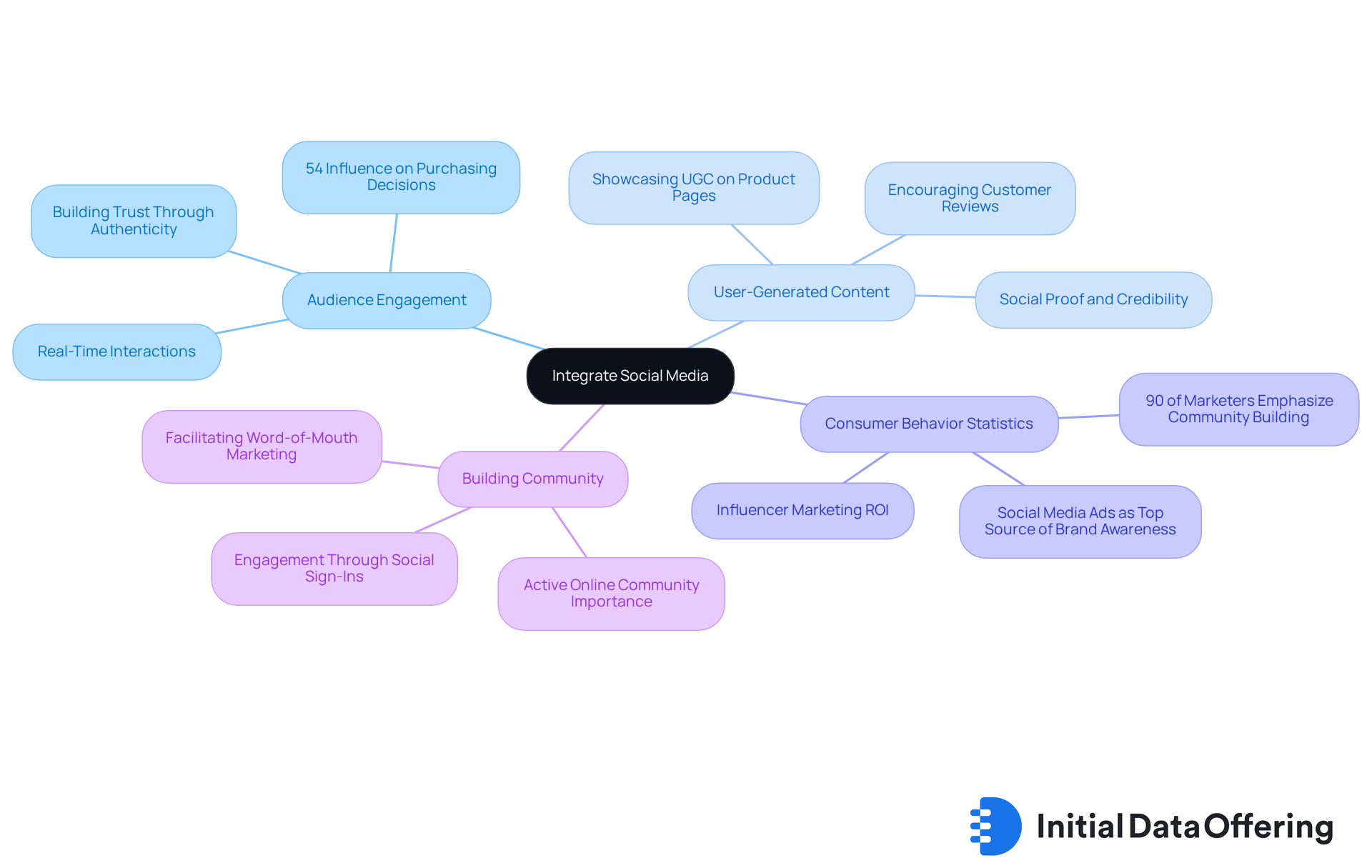
Create a Scrollable Homepage: Enhance Navigation and Accessibility
Creating a scrollable homepage provides individuals with access to a wealth of information without the need to click through multiple pages. This format aligns with contemporary browsing behaviors, where users prefer scrolling over clicking. By ensuring that the most important information is easily accessible at the top, additional details can be revealed as users scroll down.
Research indicates that individuals often favor the fluidity of scrolling, which allows for continuous content discovery without the interruptions associated with navigating multiple pages. This observation is supported by Tim Neusesser, who notes that infinite scrolling reduces interaction costs and enhances engagement, although it may not be suitable for every website.
Websites that effectively utilize scrollable navigation, such as social media platforms and news sites, demonstrate how this layout can accommodate user preferences. This method not only enhances the user experience but also improves accessibility, facilitating easier navigation for individuals with diverse abilities. By minimizing the need for clicks, scrollable layouts can support individuals with mobility challenges, making information more reachable to a wider audience.
Current trends in business web design emphasize user-centric layouts that prioritize accessibility. Integrating elements such as large touch targets and distinct visual hierarchies can enhance usability, ensuring that everyone, regardless of their abilities, can navigate the platform with ease. However, it is crucial to consider potential performance issues associated with infinite scrolling, as it can lead to slower load times on content-heavy sites.
As scrolling remains a prevalent preference, implementing a scrollable homepage layout can significantly enhance overall site effectiveness and visitor satisfaction. To execute this effectively, site owners should prioritize understanding visitor pain points and business limitations in their business web design, ensuring that the layout aligns with client needs and improves the overall experience.
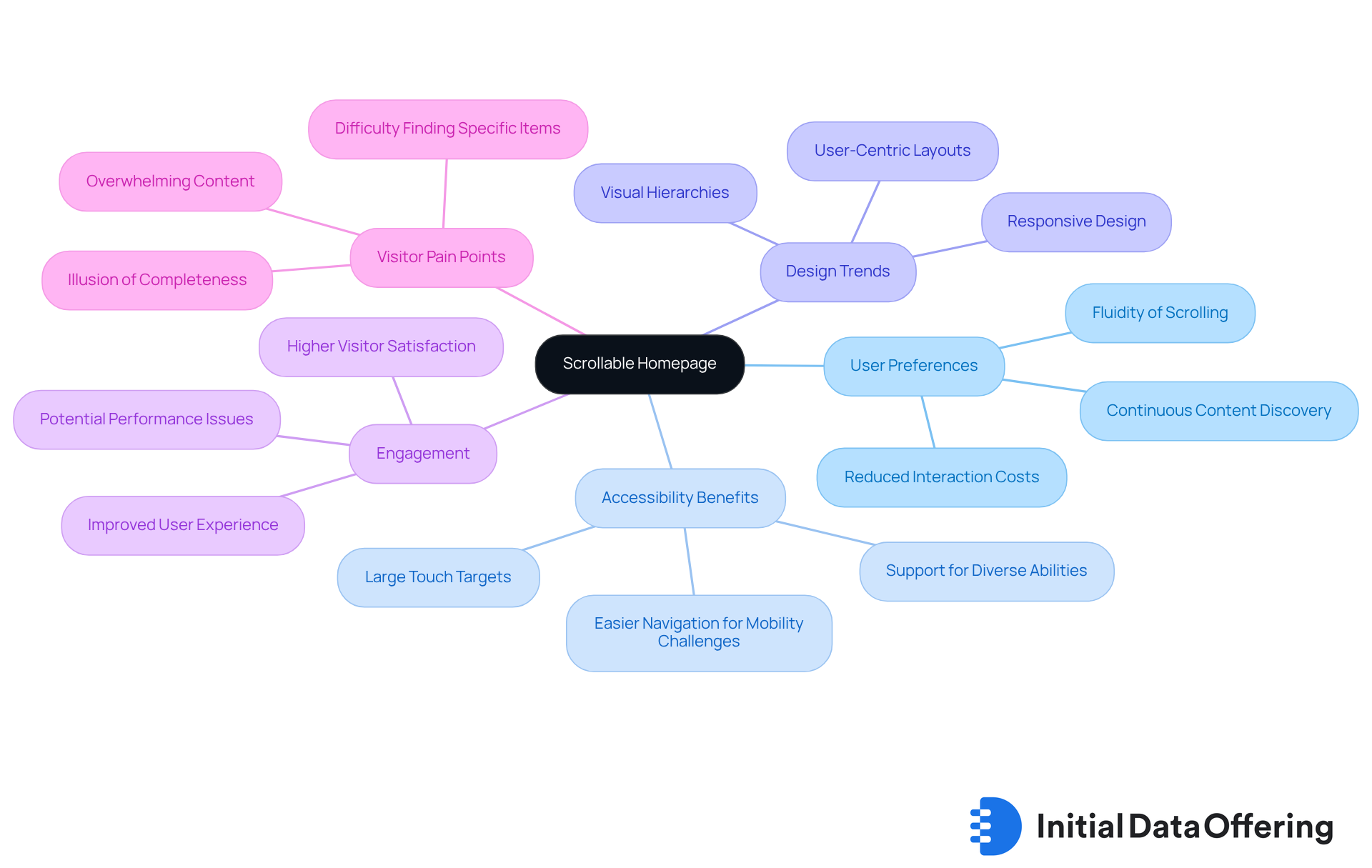
Make Your Site Mobile-Responsive: Cater to All Devices
A mobile-responsive design is essential for ensuring that your platform operates smoothly across all devices, from desktops to smartphones. This adaptability significantly enhances visitor experience and is a key factor in improving your webpage's SEO ranking, as search engines increasingly prioritize mobile-friendly pages. The fact that mobile website shopping grew by 48% during the COVID-19 pandemic underscores the importance of addressing mobile visitors.
Implementing flexible layouts and scalable images not only creates a consistent experience for all users but also aligns with Google's mobile-first indexing approach, which states that "Google now prioritizes the mobile version of a site over the desktop version." By focusing on mobile responsiveness, businesses can effectively boost their visibility and engagement in an increasingly mobile-driven digital landscape.
Furthermore, responsive layouts have been demonstrated to enhance SEO rankings, making it crucial for companies aiming to improve their online visibility. Consider how these insights can be applied to your own strategies:
- Are you effectively engaging mobile users?
- Are your layouts optimized for all devices?
Addressing these questions can lead to significant improvements in user experience and search engine performance.
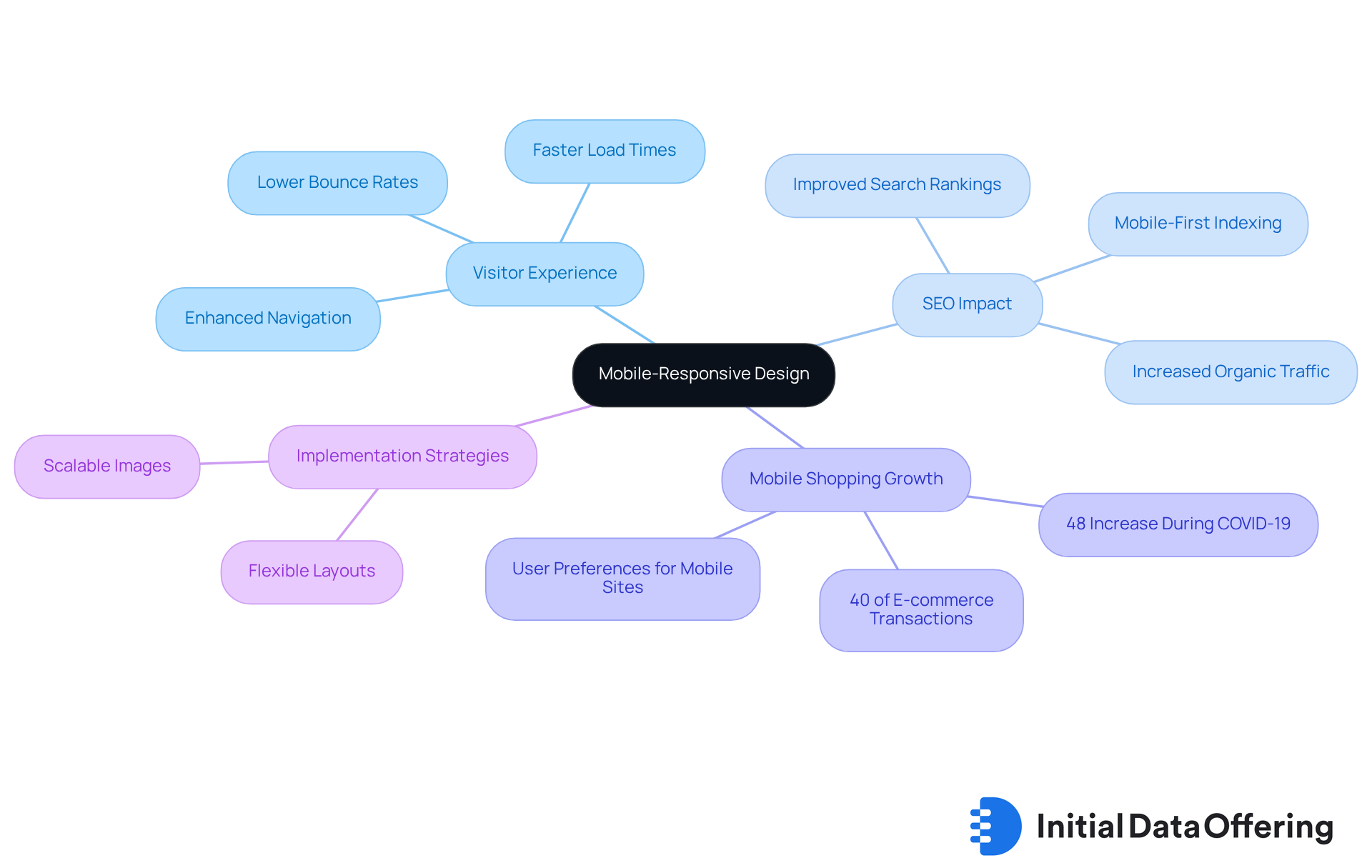
Optimize for Search Engines: Increase Visibility and Traffic
Incorporating SEO best practices into your web design is crucial for enhancing visibility and driving traffic. By integrating relevant keywords throughout your content—such as in meta tags and alt text—you can significantly improve your ranking on search engines. For instance, businesses that effectively optimize their websites have reported traffic increases of up to 50% within months of implementation. This demonstrates the advantage of prioritizing SEO in your design strategy.
Moreover, properly implemented schema markup can increase click-through rates by up to 30%, making structured data essential for effective SEO. Fast loading times are also critical; research indicates that a one-second delay in page load can lead to a 7% reduction in conversions. These statistics highlight the importance of both speed and structure in your web design, ultimately benefiting user experience and engagement.
Regularly updating your content not only keeps it fresh but also signals to search engines that your site is active, which can positively impact rankings. Have you considered how often you refresh your content? Furthermore, leveraging analytics tools like Google Search Console and Google Analytics 4 allows you to track performance metrics, identify underperforming areas, and make informed adjustments to your strategy. As Adam Heitzman notes, 'SEO no longer stands alone. It thrives when integrated with other marketing efforts.' By prioritizing these optimization techniques, including business web design considerations, businesses can enhance their search engine visibility and attract more visitors.
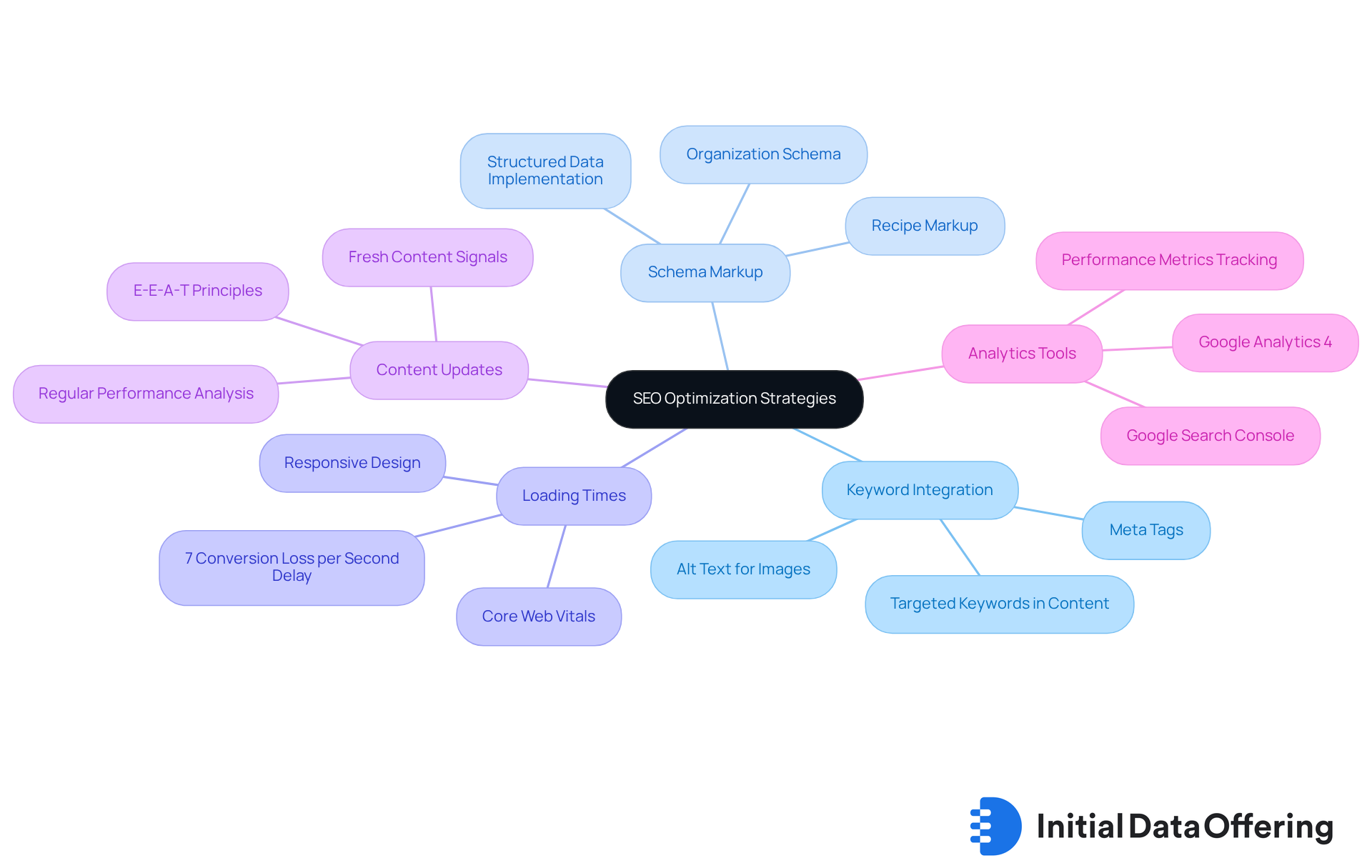
Implement Strong Website Security: Protect User Data
Implementing strong security measures, such as SSL certificates and regular security audits, is crucial for safeguarding individual data. These features not only protect sensitive information but also enhance your brand's credibility.
How does this impact your business?
- A secure online platform reassures individuals that their information is safe, which motivates them to engage more with your platform.
- By displaying security badges, you can further instill confidence in your users, ultimately driving interaction and fostering trust.
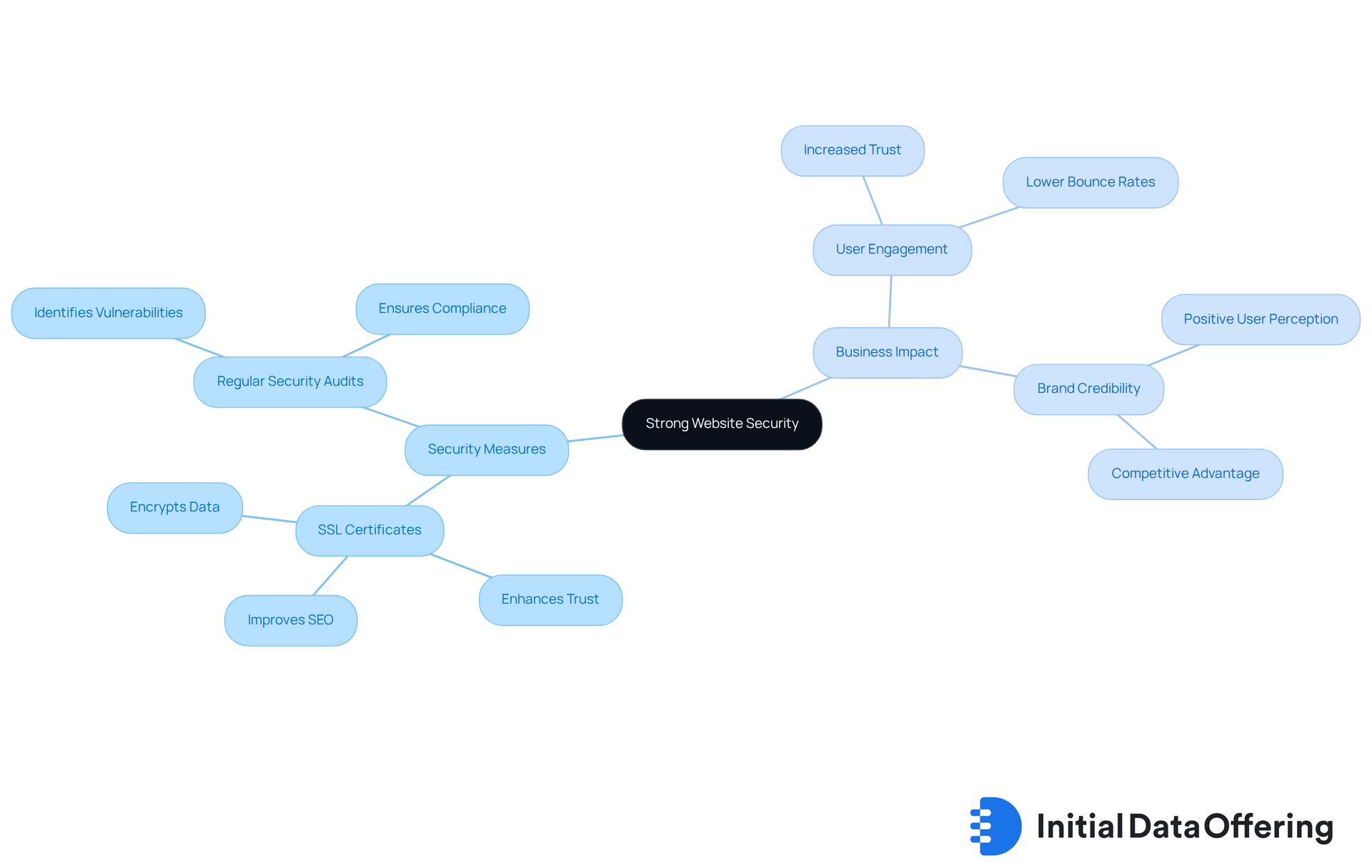
Choose Typography Wisely: Enhance Readability and Engagement
Choosing the appropriate typography is essential for improving both readability and engagement on your website. Fonts should not only be easy to read but also resonate with your brand's identity. Key considerations include:
- Font size
- Line spacing
- Contrast
All of which contribute to making your content accessible to a diverse audience. Research shows that a well-selected typeface can greatly enhance the experience of visitors, motivating them to spend more time on your site. For instance, studies indicate that 75% of individuals are more inclined to interact with content that is easily readable. Additionally, typography accounts for 90% of what is visible on screen in digital content.
Limiting the number of fonts to 2-3 can create a more organized and visually appealing design, reducing clutter and enhancing clarity. As trends develop, integrating responsive typography and considering accessibility-oriented fonts is becoming crucial to cater to individuals with diverse requirements. Have you considered how your typography choices affect your audience's experience? As Hitesh Puri notes, typography must adapt to meet diverse accessibility requirements. By prioritizing these elements, you can effectively leverage typography to enhance interaction and satisfaction.
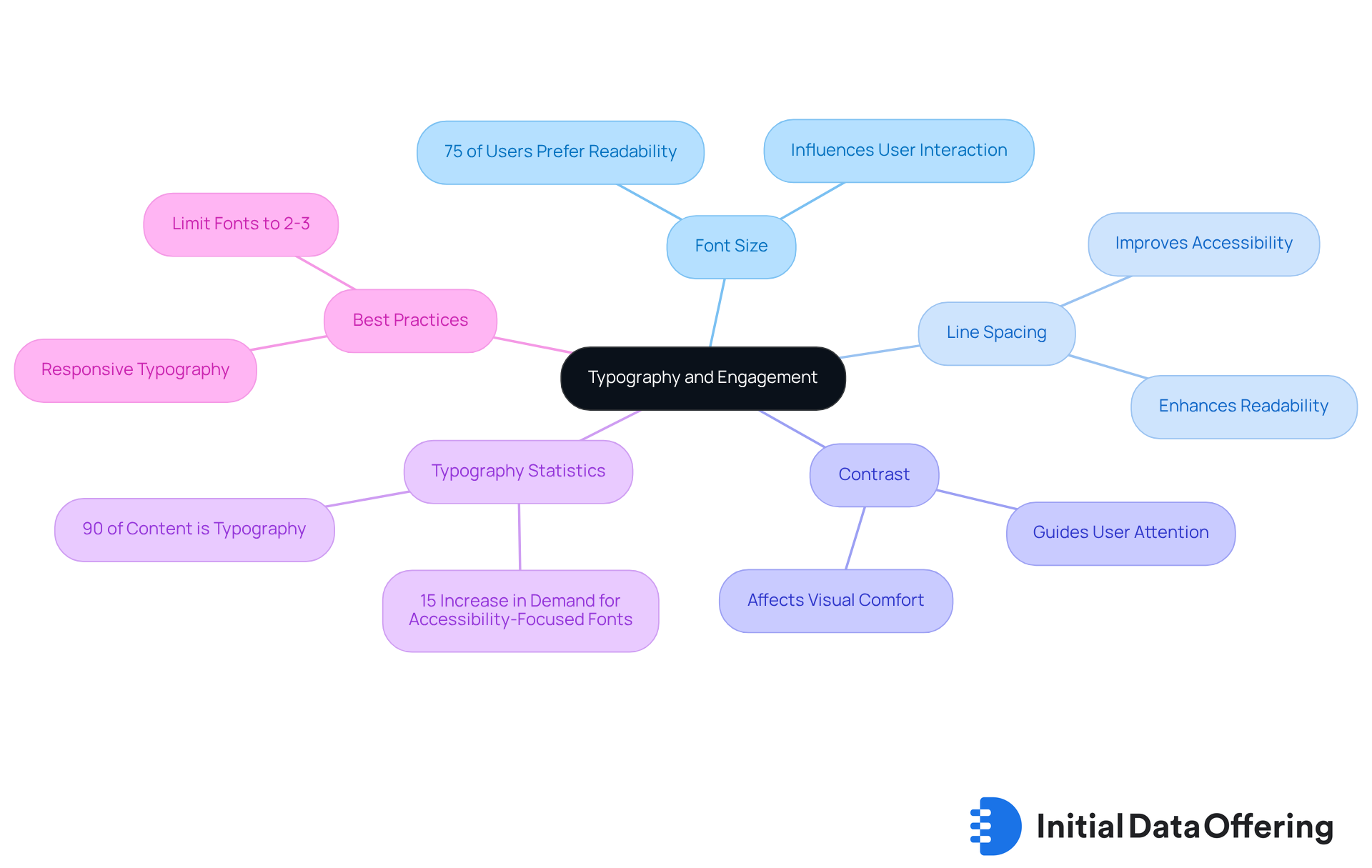
Select an Appropriate Color Scheme: Reflect Your Brand Identity
Selecting a suitable color palette is essential for representing your brand identity. It elicits the intended emotional reaction from individuals, aligning with your brand values and appealing to your target audience. Uniformity in color application throughout your platform enhances brand recognition, creating a cohesive experience for visitors. This consistency not only reinforces your brand image but also fosters trust among your audience.
How can you ensure your color choices resonate with your target demographic? By thoughtfully considering these elements, you can significantly impact how your brand is perceived.
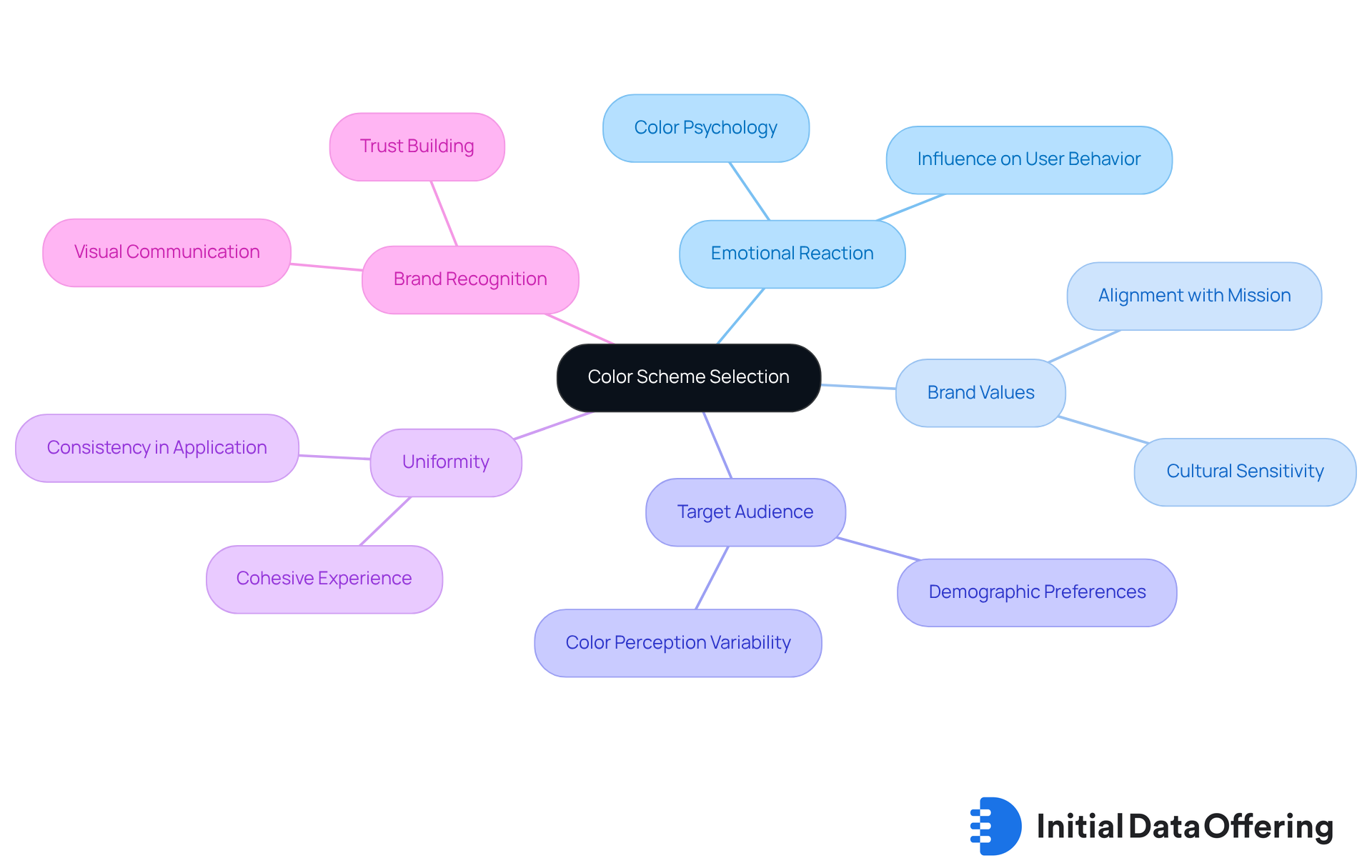
Use AI Website Builders for Efficiency: Simplify Your Design Process
AI website builders are revolutionizing business web design by enabling businesses to create visually appealing sites without the need for extensive coding skills. These platforms offer a variety of templates and styling suggestions tailored to user preferences, which promotes a polished and professional appearance. By automating repetitive creative tasks, businesses can concentrate on crafting compelling content and strategic planning, significantly enhancing their online presence.
As Ginni Rometty, former CEO of IBM, stated, 'AI should be viewed as a technology that enhances human capabilities rather than replacing them,' highlighting the supportive role of AI in website creation. Additionally, Reid Hoffman emphasizes that 'AI will create new opportunities and roles that we can’t yet imagine,' underscoring the transformative potential of these tools.
This shift not only improves efficiency but also makes business web design accessible, allowing even those with limited technical skills to establish a strong digital presence. For instance, companies like Wix and Squarespace have effectively leveraged AI tools to streamline their design processes, showcasing the practical benefits of these technologies in real-world applications.
Furthermore, staying updated with the latest trends in AI technology, such as the integration of machine learning algorithms for personalized user experiences, is crucial for businesses seeking to maintain a competitive edge in the digital landscape.
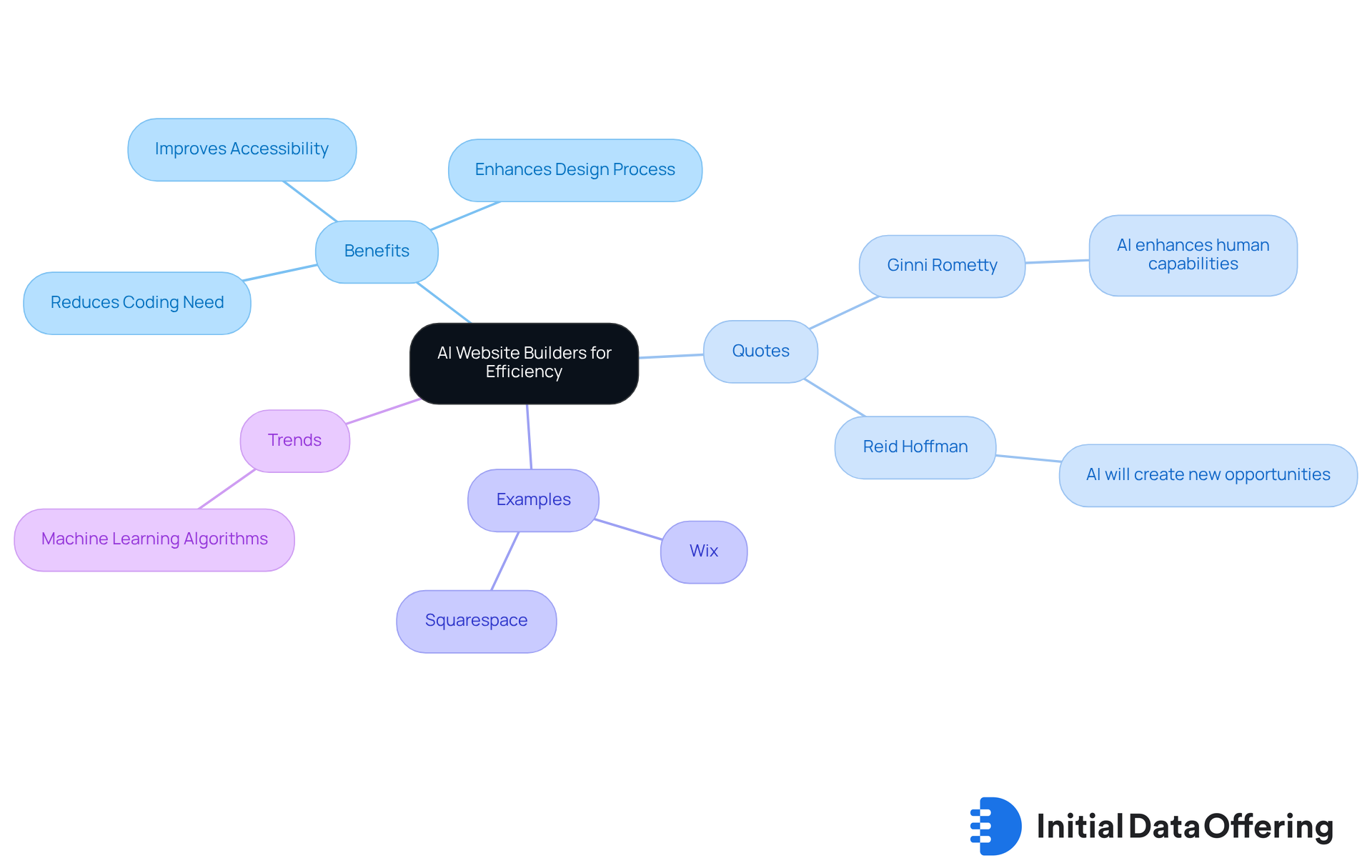
Conclusion
Effective business web design extends beyond mere aesthetics; it is a strategic endeavor that significantly impacts user engagement and conversion rates. By prioritizing data-driven insights, simplicity, and accessibility, businesses can craft platforms that resonate with their target audience, fostering trust and enhancing user experience. The integration of modern technologies, such as AI, along with adherence to best practices in SEO, security, and responsive design, constitutes essential components that contribute to a successful online presence.
The article underscores several key strategies for achieving effective web design:
- Utilizing unique datasets allows businesses to tailor their platforms to meet consumer needs.
- A clean and simple layout minimizes distractions and encourages exploration.
- Social media integration enhances visibility and engagement.
- A mobile-responsive design guarantees accessibility across devices.
- Optimizing for search engines and implementing robust security measures play vital roles in attracting and retaining visitors.
- Typography and color scheme choices further enhance readability and brand identity, making them crucial considerations in the design process.
In conclusion, the significance of effective business web design cannot be overstated. By implementing these essential tips and practices, businesses can create compelling online experiences that not only capture attention but also drive conversions. Embracing these strategies will ensure that companies remain competitive in an ever-evolving digital landscape, ultimately leading to sustainable growth and success. The time to invest in a robust web design strategy is now, as it lays the foundation for future engagement and brand loyalty.
Frequently Asked Questions
What is the purpose of utilizing unique datasets from Initial Data Offering?
Utilizing unique datasets helps businesses gain essential insights into consumer preferences and behaviors, allowing them to tailor their web platforms to better meet the needs of their target audience.
How does website loading speed affect conversion rates?
Websites that load in one second can see conversion rates nearly tripling compared to slower competitors. Conversely, for every additional second of load time, the eCommerce conversion rate drops by 0.3%.
Why is a mobile-friendly layout important?
A mobile-friendly layout is crucial because it can increase repeat visits by 75%, enhancing user engagement and retention.
What is the impact of a simple and clean design on user experience?
A tidy layout minimizes distractions, guiding visitors through the site effectively, which enhances user experience and encourages them to explore further, ultimately leading to increased conversion rates.
What are the benefits of a simple web design?
Research indicates that simple designs can experience conversion boosts of up to 400%, while cluttered layouts often lead to user frustration and drop-off.
How can social media integration enhance audience engagement?
Incorporating social media buttons and feeds allows visitors to share content easily, broadening audience reach and fostering a sense of community around the brand.
What influence do social media ads have on purchasing decisions?
Recent statistics reveal that 54% of consumers under 41 report that social media ads significantly influence their purchasing decisions.
What role does user-generated content (UGC) play in web design?
UGC serves as powerful social proof that enhances credibility, improving customer experience and sales, as demonstrated by brands like Maxi Cosi.
How can social media buttons impact website traffic and sales?
The presence of social media buttons facilitates easy sharing and promotes interaction, which can lead to increased traffic and sales for the business.